GAG 2018

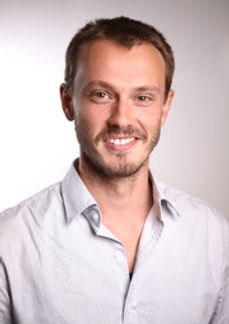
Speakers
Massey University, New Zealand
Title: The Geometry and Arithmetic of Kleinian Groups
Abstract:
Over the last few decades the theory of Kleinian groups has flourished because of its intimate connections with low dimensional topology and geometry.
In this series of talks we survey and describe various aspects of the geometry and arithmetic of Kleinian groups - discrete groups of isometries of hyperbolic 3-space.
In particular, after an easy introduction to the general theory, we initiate a study of two-generator groups and discuss the classification of the arithmetic generalised triangle groups (and their near relatives). This leads naturally to consideration of Siegel’s problem of identifying the minimal co-volume hyperbolic lattice and other “universal constraints” on Kleinian groups – a key feature of discrete isometry groups in negative curvature. These include results such as Jørgensen’s inequality, the higher dimensional version of Hurwitz’s 84g-84 theorem and a number of other things.
We will see that big part of the work necessary to obtain these results is in getting concrete descriptions various analytic spaces of two-generator Kleinian groups.
University of Sydney, Australia
Title: Buildings, Hecke algebras, and random walks
Abstract: Buildings are combinatorial/geometric objects whose theory grew from the fundamental work of Jacques Tits, whose initial goal was to give a uniform description of semisimple Lie groups and algebraic groups by associating a geometry to each such group. In these lectures we will begin by giving an informal introduction to the theory of buildings, starting with an intuitive outline of the theory of Coxeter groups. Next we will discuss how the building can be used to study probability theory on certain groups of Lie origin, making use of the representation theory of an associated Hecke algebra. Therefore we will take a brief detour into the world of Hecke algebras, emerging on the other side with a local limit theorem for random walks on affine buildings and p-adic Lie groups.
University of Newcastle, Australia
Title:Totally disconnected locally compact groups and geometry
Abstract: The lectures describe various aspects of the theory of totally disconnected locally compact (tdlc) groups in geometric terms. In the first lecture, we define Cayley-Abels graphs of a compactly generated tdlc group and the metric space of its compact open subgroups. The scale function is then defined and given a geometric description. The second lecture introduces flat subgroups of tdlc groups and explains the main results about flatness, which justify use of the geometric term `flat' for these subgroups. The final lecture covers attempts to ascribe geometries to tdlc groups that are more canonical than Cayley-Abels graphs. Not all results will be proved in the lectures but all the ideas will be illustrated by numerous examples.
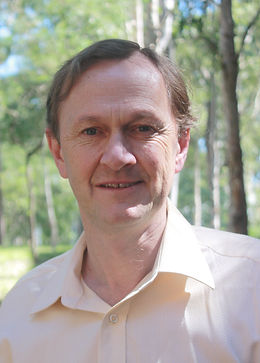
Marston Conder
University of Auckland, New Zealand
Edge-transitive graphs and the answer to a 1967 question by Folkman
Abstract:
Graphs with a large automorphism group hold a significant place in mathematics, dating back to the time of first recognition of the Platonic solids, and also now in other disciplines where symmetry plays an important role, such as fullerene chemistry, and interconnection networks.
Two major classes of such graphs are the vertex-transitive graphs and
arc-transitive graphs, whose automorphism group has a single orbit on vertices or on arcs, respectively. The former includes the sub-class of Cayley graphs, for which some group acts regularly on vertices. Another important class is the class of edge-transitive graphs, and its sub-class of "semi-symmetric" graphs, which are regular and edge-transitive but not vertex-transitive. (An example is the 3-valent Gray graph of order 54.)
In this talk I'll describe some recent joint work with Gabriel Verret in which
we developed a means of constructing all edge-transitive graphs of up to a given order, using transitive permutation groups. The case where the graph is bipartite is interesting, in both the vertex-transitive and non-vertex-transitive situations.
Also this work provided the answer to a 1967 question by Folkman about the "valency to order" ratio for semi-symmetric graphs, and led to a construction of an infinite family of semi-symmetric graphs in which this ratio can get arbitrarily close to its non-sharp upper bound of 1/2.
The lecture series will be given by:
The 1-hour lectures will be given by:
University of Auckland, NZ
Title: Algorithms for linear groups
Abstract: Matrix representations of groups play a fundamental role in mathematics and other disciplines. Over the past 20 years, a major research project has sought to use geometry, randomness, statistics and computer science to provide
effective algorithms for their study. I will survey some of the highlights of this project.
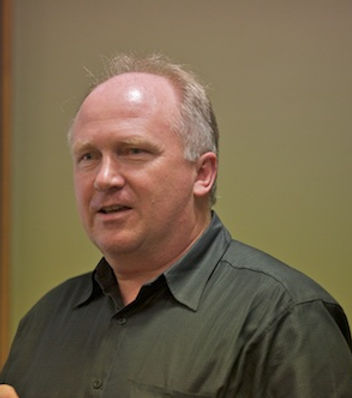
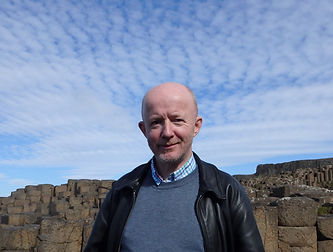
Gunter Steinke
Abstract: In this talk we give a brief introduction to projective planes, Laguerre planes and generalized quadrangles and an overview of how their theories are intertwined.
We will eventually focus on Laguerre planes and in particular those that are topological and have a 2-dimensional locally compact point set.
The automorphism group of such a so-called 2-dimensional Laguerre plane is a Lie group, and a natural measure of the size of the automorphism group is its dimension. We will discuss the state of the classification of 2-dimensional Laguerre planes with respect to the dimension of their automorphism groups.
A different method to obtain `large' groups of automorphisms is to require transitivity properties of groups of central automorphisms. There is a classification into various types that can possibly occur in Laguerre planes. This work was carried out by Kleinewillingh\"ofer more than a quarter century ago. In spirit these types are similar to the better known Lenz-Barlotti classes of projective planes. We will review the current state as to which types can (and do) occur in 2-dimensional Laguerre planes.
Projective planes, Laguerre planes and generalized quadrangles that admit large groups of automorphisms
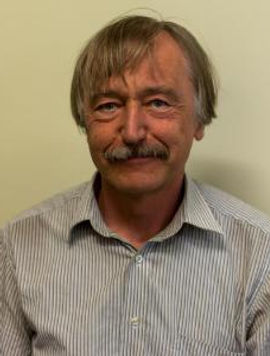
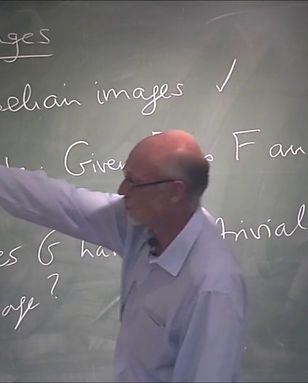
Martin Liebeck
Imperial College London
Algorithms and Strong Approximation
Abstract: A common method for investigating finitely presented groups is to study their finite images. Indeed many interesting classes are determined by their finite images. However, computing finite images can be difficult – indeed, a recent result of Bridson and Wilton states that there is no algorithm that determines whether or not an arbitrary finitely presented group has a nontrivial finite image. On the other hand, Plesken, Fabianska and Jambor have produced algorithms that determine all the images of an arbitrary finitely presented group that lie in one of the families PSL(2,q) or PSL(3,q) of finite simple groups. So the question arises: for which families of finite simple groups does such an algorithm exist? I shall present a complete solution of this question, obtained jointly with Martin Bridson, David Evans and Dan Segal. The methods involve representation theory and the theory of strong approximation (which originates from number theory), and I shall try to show how the latter is relevant, assuming no prior knowledge.
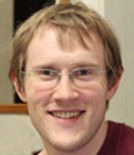
University of Newcastle, AU
Separability and commensurated subgroups
A subgroup H of a group G is commensurated if for every g in G, the index |H:H \cap gHg^{-1}$ is finite. Basic examples include virtually normal subgroups, that is, subgroups H such that G normalizes a finite index subgroup of $H$. More generally, commensurated subgroups arise naturally as point stabilizers in certain group actions: for instance if $G$ acts by isometries on a proper metric space with closed discrete orbits, then every point stabilizer is commensurated. It turns out that in a finitely generated group, a commensurated subgroup is virtually normal provided that it is an intersection of virtually normal subgroups; the latter can be thought of as weak separability condition (where a subgroup is said to be separable if it is an intersection of finite index subgroups). I will explain some consequences of this, including for lattices in locally compact groups and for groups acting on metric spaces. This is joint work with Pierre-Emmanuel Caprace, Peter Kropholler and Phillip Wesolek.
Colin Reid
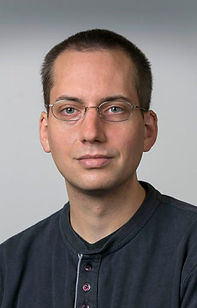
Tobias Rossmann
University of Auckland
Growth in Nilpotent Groups
This talk is devoted to counting problems associated with nilpotent groups, e.g. the enumeration of subgroups of finite index or of conjugacy classes of finite quotients. Over the past decades, it became clear that asymptotic properties of such counting problems are often captured by suitable zeta functions. The study of these functions turned out to involve techniques from a surprising number of areas, including e.g. algebraic geometry and model theory. I will give an introduction to this branch of asymptotic group theory and discuss some recent developments.

Annalisa Conversano
Semi-algebraic groups
Abstract: Semi-algebraic groups form a class of topological groups strictly in between algebraic groups and Lie groups. They have been thoroughly studied for the last three decades, and I will present some basic structure results and examples.
The thirty minute talks are given by:
Primitives in free groups are context-sensitive languages
Abstract:
(joint work with Laura Ciobanu and Murray Elder)
An element of a free group F is called primitive, if it can be contained in a some free base of F. Similarly, a subset of elements of F is called primitive set, if it can be extended to a free base. Using Stallings foldings, we show that as a formal languages the set of primitives (and the set of primitive subsets) are context-sensitive.
Michal Ferov

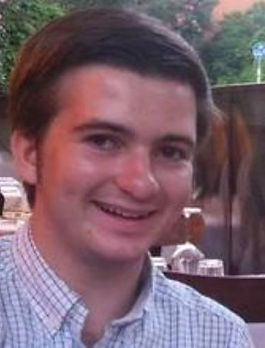
Scott Harper
Uniform Domination for Simple Groups
It is well-known that every finite simple group can be generated by just two elements. In fact, by a theorem of Guralnick and Kantor, there is a conjugacy class C such that for each non-identity element x there exists an element y in C such that x and y generate the entire group. Motivated by this, we introduce a new invariant for finite groups: the uniform domination number. This is the minimal size of a subset S of conjugate elements such that for each non-identity element x there exists an element s in S such that x and s generate the group. This invariant arises naturally in the study of generating graphs.
In this talk, I will present recent joint work with Tim Burness, which establishes best possible results on the uniform domination number for finite simple groups, using a mix of probabilistic and computational methods, together with recent results on the base sizes of primitive permutation groups.